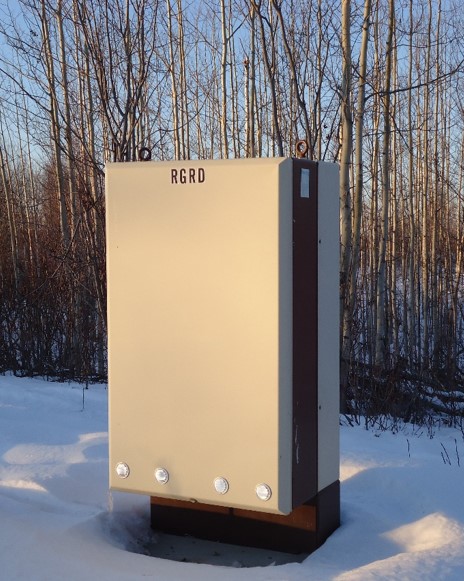Students: Derek Boyce, John Pahkala
Faculty Advisor or Community Project Lead: Dr. Alex Hills
Client Organization: Matanuska Telephone Association
Summary:
MTA is exploring its options to meet the increased demand for broadband service to its Big Lake members. Big Lake presents a problem for MTA that is also found in many other rural areas. There is a large demand for high speed internet service, but the service area is large and the population is sparse. MTA is a legacy telephone provider and as a result many of the connections from MTA’s equipment, called DSLAMs (Digital Subscriber Line Access Multiplexors), to the customer are made up of twisted copper pair conductors remaining from the days of traditional telephone service. MTA provides internet service over these twisted copper pairs quite successfully, with some of their members getting speeds of up to 30 Mbps downstream and 3 Mbps upstream. The main limitations of this network configuration include the loop length of the “last mile” and the transport capability from the core Internet Protocol network to the DSLAM. In MTA’s industry, the connection from the DLSAM to the customer’s location is called the “last mile”.
MTA has invested in upgrades to connect most of their DSLAMs to the core network using fiber-optic cable as transport, which has a very high capability. However, in some sparsely populated areas, it is cost prohibitive to make the investment to install fiber-optic cable; as a consequence, transport to the DSLAM is provided over the existing twisted copper pair. This results in reduced capability to all members fed from these DSLAMs.
The Big Lake area has twelve DSLAMs in total. Three of the DSLAMs on the eastern side of Big Lake are served with fiber-optic transport and meet the current capability demand. The other nine DSLAMs all use twisted copper pair as transport. These are located in the northern and southern areas around Big Lake. Over the last few years MTA has focused its network design to reduce the distance of the “last mile”. Now the limitation mainly resides in the inadequate transport capability of the nine DLSAMs fed by twisted copper pair.
Problem Statement:
MTA has requested that UAA explore options to increase the broadband service to its Big Lake members. They have asked UAA to focus on designing a low-cost transport system that connects the nine copper-fed DSLAMs to the core Internet Protocol network. The existing copper twisted pair transport to these DSLAMs is the main limitation in this area’s network capability. MTA views microwave transport as a viable option. They asked UAA to explore using microwave technology or a hybrid of fiber-optic and microwave to provide a solution to the transport problem.
Document(s):


Comments are closed